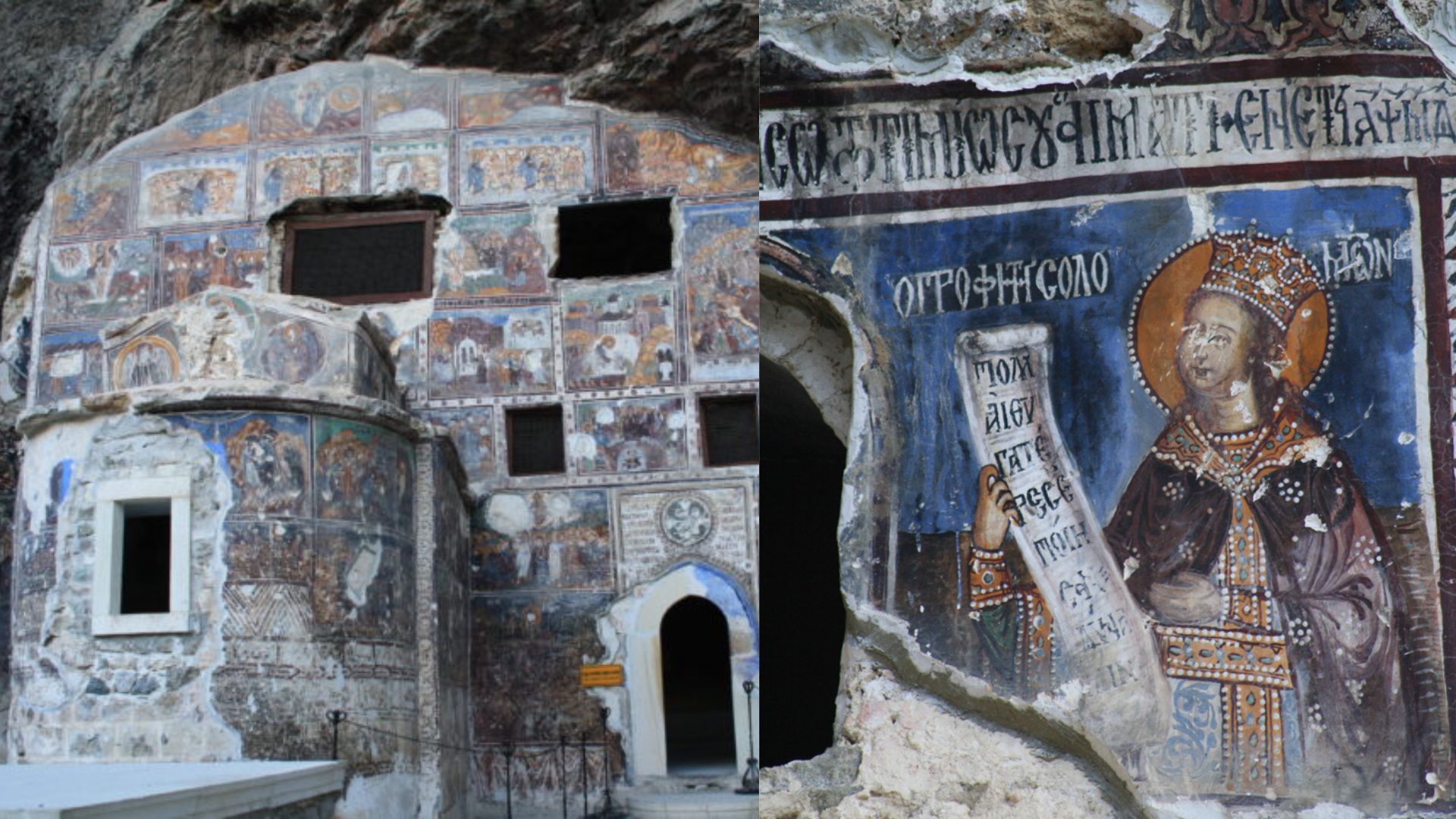Perched precariously on a cliff in the Pontic Mountains of Turkey, Sumela Monastery is not just an architectural marvel but a symbol of the enduring Christian faith in the region. Since its founding in the 4th century CE, this sacred site has witnessed the rise and fall of empires, religious transformations, and a remarkable revival in modern times.
A Monument to Christian Faith
Sumela Monastery’s religious significance is rooted in the legend of its origin. Tradition holds that the monastery was founded around 386 CE during the reign of Roman Emperor Theodosius I by two Greek monks, Barnabas and Sophronios, who traveled from Athens to the remote mountains along the Black Sea coast. They were reportedly guided by a vision of the Virgin Mary, who led them to a hidden icon of herself and the Christ Child, said to have been painted by the Apostle Luke. This sacred icon, known as the Panagia Soumela, became the spiritual heart of the monastery and drew pilgrims from across the Christian world.

Over the centuries, Sumela grew into a major center of Christian worship and monastic life, particularly under the Byzantine Empire. The monastery flourished during the reign of Emperor Justinian I, who expanded the site. Despite periods of destruction and hardship, such as being looted and burned in 650 CE, it was repeatedly restored and remained an important religious and cultural hub.
The Byzantine frescoes that adorn the interior walls are a testament to the monastery's spiritual and artistic heritage. These vivid depictions of Christ, the Virgin Mary, saints, and biblical scenes—though damaged by time and vandalism—remain a profound visual expression of the faith that has animated Sumela for centuries.
Orthodoxy and Ottoman Patronage
Sumela’s religious prominence continued even under Ottoman rule, which began in 1461 when the empire conquered the region. While the Ottomans were predominantly Muslim, they allowed a significant degree of religious freedom for Christians. In fact, Ottoman sultans recognized Sumela’s sacred status and supported the monastery with donations and land, a sign of their respect for its spiritual importance.
Levent Alniak, Trabzon’s manager of museums and historic sites, explains, “The sultans considered Sumela a sacred place and helped the monastery. Sometimes they would change a church into a mosque, but they left Christians to do their religion.” This respect for Sumela underscores its unique role as a place of devotion for both Christian and Muslim pilgrims throughout history.
Sumela’s fortunes changed in the early 20th century, during the turbulent years following World War I and the collapse of the Ottoman Empire. In 1923, after a civil war between Greek and Turkish forces, the region's Greek population—including the monks of Sumela—was forced to relocate to Greece. Fearing the loss of their sacred treasures, the monks buried many of the monastery’s valuables in secret locations before they left. While some of these items were recovered and are now housed in museums or private collections, others remain lost to time.
The monastery was abandoned for decades and became a target for treasure hunters, vandals, and the elements. Its frescoes were damaged, and some of the images, particularly the eyes of saints and holy figures, were scratched out. Öznur Doksöz, a guide at Sumela since the 1980s, recounts a local legend about this vandalism: “People scratched the eyes and boiled the paint chips, believing it would bless them. We don’t know if it’s true, but that’s what people say.”
Restoration efforts began in the 1970s, culminating in a major renovation project in recent years. The restoration uncovered hidden treasures, including a secret chapel accessed through a tunnel. Inside, frescoes depicting heaven, hell, life, and death offer a striking reminder of the monastery’s spiritual and artistic heritage.
Sumela’s religious legacy was revived in 2010 when the Ecumenical Patriarch of Constantinople conducted the first Orthodox service at the monastery in 88 years, on the Feast of the Assumption of the Virgin Mary. Since then, this annual liturgy has drawn Orthodox Christians from around the world, rekindling Sumela’s role as a place of pilgrimage and worship.
Restoration continues, with teams of experts meticulously repairing the damaged frescoes. Visitors can now witness the delicate process of removing graffiti and restoring the vibrant colors that once adorned the walls. Restorer Şenol Aktaş describes the painstaking work: “We are trying to remove the graffiti by painting over it with a style and colors similar to what the original artists used.”
Despite these challenges, Sumela’s rich spiritual legacy endures, offering a powerful connection to the early Christian era. Its frescoes, though scarred by history, still radiate the faith of the artists and monks who once called this cliffside sanctuary home.
Today, Sumela Monastery stands not only as a symbol of faith but also as a national treasure and a tourist destination. Visitors are drawn to its stunning location, clinging to the cliffs of Altındere Valley, and its profound religious significance. Every August 15, pilgrims gather for the Orthodox liturgy, while others come year-round to explore the sacred site and its breathtaking frescoes.